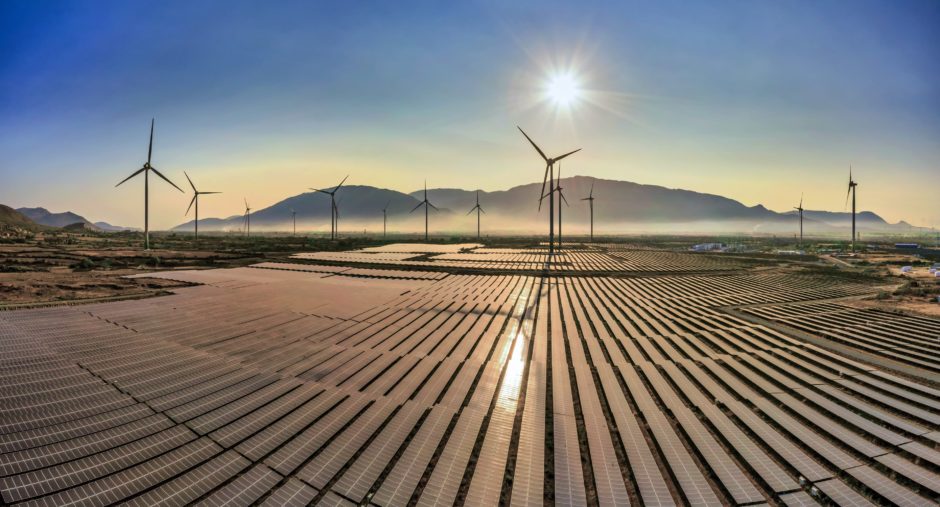
A record amount of solar panels, wind turbines and other renewable power is set to be installed worldwide in 2021, the International Energy Agency has said.
In its latest report, the IEA said the growth in renewable electricity is set to accelerate over the coming years, and will account for almost 95% of the increase in global power capacity up to 2026.
Despite rising costs for key materials used for making solar panels and wind turbines, some 290 gigawatts (GW) of new renewable power is set to be installed this year, surpassing the previous all-time high set last year, it said.
The amount of renewables added between 2021 and 2026 is expected to be 50% higher than from 2015 to 2020, driven by stronger support from government policies and more ambitious clean power goals announced before and during the Cop26 UN climate summit in Glasgow in November.
But the world is still well short of the level of renewable power installations needed to put it on a path to net-zero climate emissions by 2050 to avoid the most dangerous impacts of rising temperatures, it said.
China is expected to have installed 1200GW of wind and solar capacity by 2026 – four years earlier than its target date of 2030, and raising hopes that the world’s biggest polluter could peak its carbon emissions “well before” 2030, IEA executive director Fatih Birol said.
India is set to double its new installations compared with 2015-2020 and deployments in Europe and the US are also set to speed up significantly.
Dr Birol said: “This year’s record renewable electricity additions of 290 gigawatts are yet another sign that a new global energy economy is emerging.
“The high commodity and energy prices we are seeing today pose new challenges for the renewable industry, but elevated fossil fuel prices also make renewables even more competitive.”
And he said: “The growth of renewables in India is outstanding, supporting the government’s newly-announced goal of reaching 500GW of renewable power capacity by 2030 and highlighting India’s broader potential to accelerate its clean energy transition.
“China continues to demonstrate its clean energy strengths, with the expansion of renewables suggesting the country could well achieve a peak in its CO2 emissions well before 2030.”
Governments can further accelerate the growth by addressing issues such as grid connections, and high financing costs in the developing world, the report said, which could boost average annual renewable capacity additions by a quarter above the main projections in the IEA report.
But even that is not enough – with annual renewable power additions over the next five years needing to be nearly double the rate of the rate of the main scenario in the IEA report.
And growth in biofuels will need to be four times higher, and renewable heat demand will need to be almost three times higher, the IEA said.
And it warned that if commodity prices remain high through to the end of 2022, the cost of wind investments will go back up to levels last seen in 2015 and erase the last three years of falls in solar costs.
